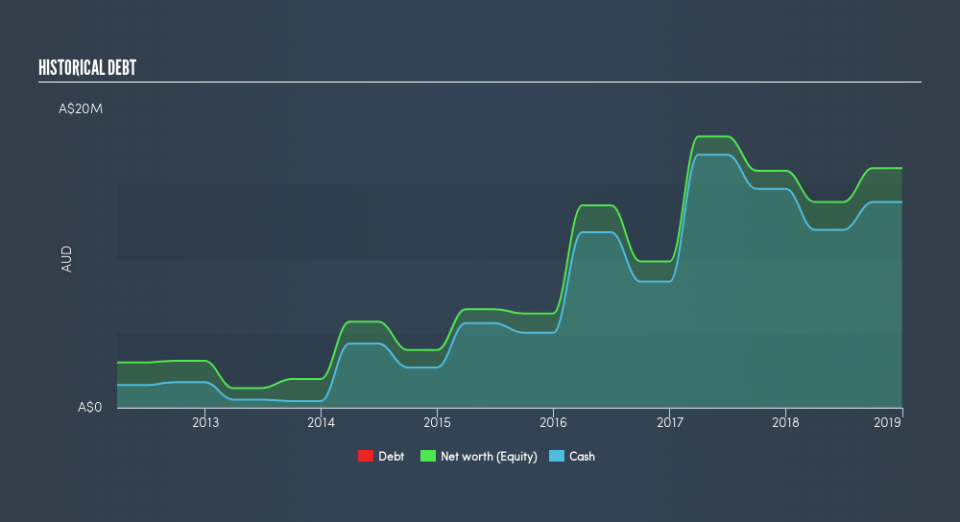If You Had Bought Talga Resources (ASX:TLG) Stock Five Years Ago, You Could Pocket A 198% Gain Today

The most you can lose on any stock (assuming you don’t use leverage) is 100% of your money. But on a lighter note, a good company can see its share price rise well over 100%. One great example is Talga Resources Limited (ASX:TLG) which saw its share price drive 198% higher over five years. And in the last month, the share price has gained -8.3%. This could be related to the recent financial results that were recently released – you could check the most recent data by reading our company report.
Check out our latest analysis for Talga Resources
Talga Resources hasn’t yet reported any revenue yet, so it’s as much a business idea as a business. So it seems that the investors more focused on would could be, than paying attention to the current revenues (or lack thereof). For example, investors may be hoping that Talga Resources finds some valuable resources, before it runs out of money.
Companies that lack both meaningful revenue and profits are usually considered high risk. There is almost always a chance they will need to raise more capital, and their progress – and share price – will dictate how dilutive that is to current holders. While some such companies go on to make revenue, profits, and generate value, others get hyped up by hopeful naifs before eventually going bankrupt. Talga Resources has already given some investors a taste of the sweet gains that high risk investing can generate, if your timing is right.
Talga Resources had net cash of AU$12m when it last reported (December 2018). That’s not too bad but management may have to think about raising capital or taking on debt, unless the company is close to breaking even. With the share price up 24% per year, over 5 years, the market is seems hopeful about the potential, despite the cash burn. You can click on the image below to see (in greater detail) how Talga Resources’s cash and debt levels have changed over time.
It can be extremely risky to invest in a company that doesn’t even have revenue. There’s no way to know its value easily. However you can take a look at whether insiders have been buying up shares. It’s often positive if so, assuming the buying is sustained and meaningful. Luckily we are in a position to provide you with this free chart of insider buying (and selling).
What about the Total Shareholder Return (TSR)?
We’d be remiss not to mention the difference between Talga Resources’s total shareholder return (TSR) and its share price return. Arguably the TSR is a more complete return calculation because it accounts for the value of dividends (as if they were reinvested), along with the hypothetical value of any discounted capital that have been offered to shareholders. We note that Talga Resources’s TSR, at 206% is higher than its share price rise of 198%. When you consider it hasn’t been paying a dividend, this data suggests shareholders may have had the opportunity to acquire attractively priced shares in a discounted capital raising.
A Different Perspective
While the broader market gained around 8.0% in the last year, Talga Resources shareholders lost 16%. Even the share prices of good stocks drop sometimes, but we want to see improvements in the fundamental metrics of a business, before getting too interested. Longer term investors wouldn’t be so upset, since they would have made 25%, each year, over five years. If the fundamental data continues to indicate long term sustainable growth, the current sell-off could be an opportunity worth considering. Before spending more time on Talga Resources it might be wise to click here to see if insiders have been buying or selling shares.
If you are like me, then you will not want to miss this free list of growing companies that insiders are buying.
Please note, the market returns quoted in this article reflect the market weighted average returns of stocks that currently trade on AU exchanges.
We aim to bring you long-term focused research analysis driven by fundamental data. Note that our analysis may not factor in the latest price-sensitive company announcements or qualitative material.
If you spot an error that warrants correction, please contact the editor at editorial-team@simplywallst.com. This article by Simply Wall St is general in nature. It does not constitute a recommendation to buy or sell any stock, and does not take account of your objectives, or your financial situation. Simply Wall St has no position in the stocks mentioned. Thank you for reading.

 Yahoo Finance
Yahoo Finance 
